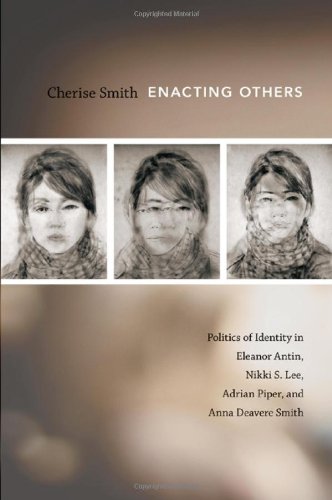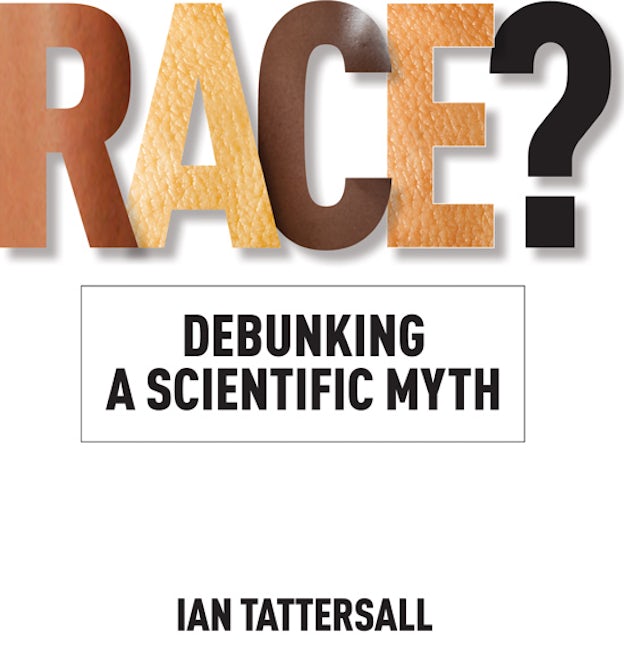Race Finished: Book Review
American Scientist
April-May, 2012
Jan Sapp, Professor of Biology and History
York University, Toronto
Race?: Debunking a Scientific Myth. Ian Tattersall and Rob DeSalle. xviii + 226 pp. Texas A&M University Press, 2011.
Race and the Genetic Revolution: Science, Myth, and Culture. Edited by Sheldon Krimsky and Kathleen Sloan. xiv + 296 pp. Columbia University Press, 2011. cloth.
Few concepts are as emotionally charged as that of race. The word conjures up a mixture of associations—culture, ethnicity, genetics, subjugation, exclusion and persecution. But is the tragic history of efforts to define groups of people by race really a matter of the misuse of science, the abuse of a valid biological concept? Is race nevertheless a fundamental reality of human nature? Or is the notion of human “races” in fact a folkloric myth? Although biologists and cultural anthropologists long supposed that human races—genetically distinct populations within the same species—have a true existence in nature, many social scientists and geneticists maintain today that there simply is no valid biological basis for the concept.
The consensus among Western researchers today is that human races are sociocultural constructs. Still, the concept of human race as an objective biological reality persists in science and in society. It is high time that policy makers, educators and those in the medical-industrial complex rid themselves of the misconception of race as type or as genetic population. This is the message of two recent books: Race?: Debunking a Scientific Myth, by Ian Tattersall and Rob DeSalle, and Race and the Genetic Revolution: Science, Myth, and Culture, edited by Sheldon Krimsky and Kathleen Sloan. Both volumes are important and timely. Both put race in the context of the history of science and society, relating how the ill-defined word has been given different meanings by different people to refer to groups they deem to be inferior or superior in some way.
Before we turn to the books themselves, a little background is necessary. A turning point in debates on race was marked in 1972 when, in a paper titled “The Apportionment of Human Diversity,” Harvard geneticist Richard Lewontin showed that human populations, then held to be races, were far more genetically diverse than anyone had imagined. Lewontin’s study was based on molecular-genetic techniques and provided statistical analysis of 17 polymorphic sites, including the major blood groups in the races as they were conventionally defined: Caucasian, African, Mongoloid, South Asian Aborigines, Amerinds, Oceanians and Australian Aborigines. What he found was unambiguous—and the inverse of what one would expect if such races had any biological reality: The great majority of genetic variation (85.4 percent) was within so-called races, not between them. Differences between local populations accounted for 8.5 percent of total variation; differences between regions accounted for 6.3 percent. The genetic divergence between geographical populations in the course of human evolution does not compare to the variation among individuals. “Since such racial classification is now seen to be of virtually no genetic or taxonomic significance either, no justification can be offered for its continuance,” Lewontin concluded…
…Race?: Debunking a Scientific Myth is a beautifully presented book, elegantly reasoned and skillfully written. Tattersall, a physical anthropologist, and DeSalle, a geneticist, are both senior scholars at the American Museum of Natural History. Their aim is to explain human diversity in terms of human evolution and dispersal since our ancestors walked out of Africa some 100,000 years ago. The patterns of diversity, they write, reflect the processes of divergence and reintegration, the yin and yang of evolution.
In biology, a grouping has biological meaning based on principles of common descent—the Darwinian idea that all members of the group share a common ancestry. On this basis, and on the ability to interbreed, all humans are grouped into one species as Homo sapiens, the only surviving member of the various species that the genus comprised. Species are arranged within the “tree of life,” a hierarchical classification that situates each species in only one genus, that genus only in one family and so on. Nothing confuses that classification more than the exchange of genes between groups. In the bacterial world, for example, gene sharing can occur throughout the most evolutionarily divergent groups. The result is a reticulate evolution—a global net or web of related organisms, and no species. Among humans, reticulation occurs when there is interbreeding within the species—mating among individuals from different geographical populations. The result of such genetic mixing of previously isolated groups—due to migrations, invasions and colonization—is that no clear boundaries can be drawn around the variety of humans, no “races” of us…
…Although race is void of biological foundation, it has a profound social reality. All too apparent are disparities in health and welfare. Despite all the evidence indicating that “race” has no biological or evolutionary meaning, the biological-race concept continues to gain strength today in science and society, and it is reinforced by those who design and market DNA-based technologies. Race is used more and more in forensics, medicine and the genetic-ancestry business. Tattersall and DeSalle confront those industries head on and in no uncertain terms, arguing that “race-based medicine” and “raced-based genomics” are deeply flawed. Individuals fall ill, not populations. Belonging to any socioculturally defined race is a poor predictor of an individual’s genes, and one’s genes a poor predictor of one’s health.
Race and the Genetic Revolution: Science, Myth, and Culture arose from two projects, both funded by the Ford Foundation and organized by the Council for Responsible Genetics, that “examined the persistence of the concept of human races within science and the impacts such a concept has had on disparities among people of different geographical ancestries.” The first project brought together academics and social-justice advocates to discuss “racialized” forensic DNA databases and seek policy solutions. The second focused on the effects of modern genetic technology in reinscribing and naturalizing the concept of race in science and society. The resulting book is a fine and richly textured compilation, in which a multidisciplinary group of scholars explore racialized medicine, various uses of genetic testing in forensics and the genetic-ancestry industry, and attempts to link intelligence and race.
Sociologist Troy Duster argues that the growing genetic-ancestry industry not only reinforces a biological conception of race but is sorely in need of government regulation in regard to claims made and accuracy of methods used to pinpoint ancestry, as was suggested by the American Society of Human Genetics in 2008…
…A different aspect of racial profiling is evident in the growing industry of racialized medicine, whose proponents might argue that even if race has no evolutionary or biological meaning, it can still be useful for medical treatments. After all, more and more diseases are reportedly correlated with ethnicity and race. But as evolutionary biologists Joseph L. Graves Jr. and Jonathan Kahn argue in their respective chapters on the subject, racialized medicine is a bad investment and is bound to fail for two reasons. First, although individual ancestries are useful on medical questionnaires, ancestry should not be conflated with race. “The issue is not primarily one of whether to use racial categories in medical practice but how,” Kahn writes.
Carefully taking account of race to help understand broader social or environmental factors that may be influencing health disparities can be warranted. . . . But it is always important to understand that race itself is not an inherent causal factor in such conditions.
As an example, he considers the drug called BiDil, FDA approved as an anti–heart-attack agent specifically marketed to African Americans on the grounds that they have a biological propensity for heart disease brought on by high blood pressure. Not only is the drug not effective for all African Americans, it is quite effective for many individuals who self-identify as Caucasian…
Read the entire review here.


